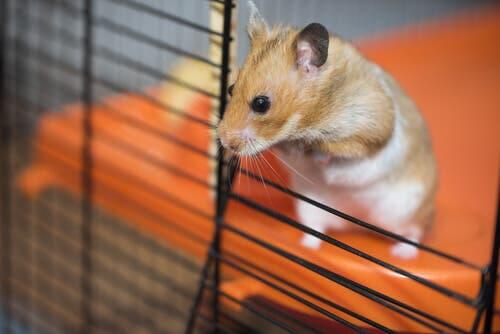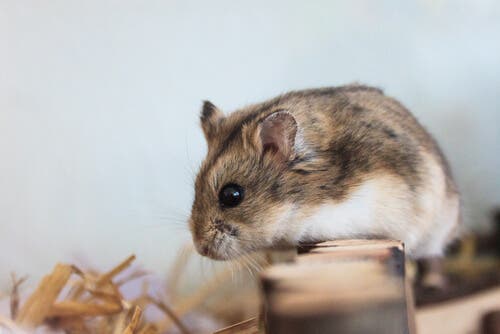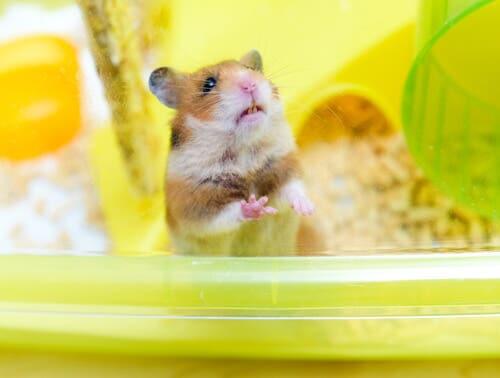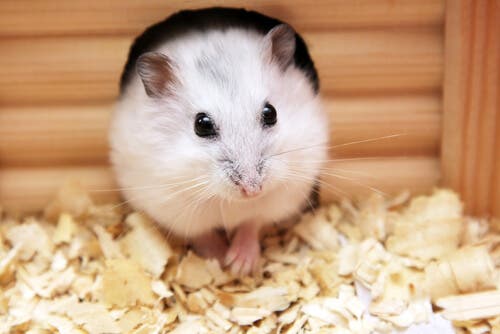How to Improve Your Hamster's Cage

Hamsters are a favorite pet among most children and even elderly people. They’re friendly, beautiful animals that are also easy to take care of. As they usually live inside a cage, let’s see how you can improve your hamster’s cage and help them live happier than ever.
The basic cage
Before considering how you can improve your hamster’s cage, you need to know the ideal cage to meet their basic needs.
The hamster’s ‘house’ should be as big as possible. The colored cages that are normally sold in pet stores are too small. Find one with as much surface area as you can. In addition, you could also use a large aquarium or one that serves for having rabbits or guinea pigs.
Have in mind that the place where your pet will live has to safe. This means that the animal shouldn’t be able to escape from the cage and shouldn’t fit between the cage bars. Some of them can even learn how to open the cage doors, this should also be avoided and prevented. Another thing to consider is to avoid placing objects that may fall on top of the animal such as ramps or unstable tubes.

The cage’s floor is also very important. Your little rodent most probably likes to dig, so the floor’s substrate floor should be as thick as possible. Remember to buy only products that are safe for them, with no strong odors or air fresheners.
What items do you need before you improve your hamster’s cage?
In addition to these basic considerations, there are several objects that hamster cages should always have:
- A feeder and a water dispenser. Hamsters can store food in their cheeks, but they should nevertheless have a food container at their disposal. They should also have a water dispenser: the most common ones are water bottles specially made for rodents. However, you should make sure you clean it frequently and regularly check that it isn’t clogged or obstructed.
- A hideout or a little house where the hamster can sleep in. It’s very likely the animal will dig tunnels to hide in and sleep, so it’ll need a dark and quiet place to use as a refuge.

Hamsters are very active animals and life inside a cage doesn’t allow them to burn all the energy they accumulate. Therefore, this is why a hamster wheel is also important to have. As a result, when your pet is running on the wheel, it’ll get the exercise it needs until it’s tired.
In addition, rodents need to wear down their teeth by chewing, and so they need toys to gnaw on. These can be cereal or wooden bars that they can chew little by little.
Improving the cage: Floors and textures
After providing the hamster with all the basics, it’s time to think about how to improve your hamster’s cage. One of the most effective ways and that takes up the least space is to add floors. This will give your pet more surface area to walk on and, as it doesn’t like open spaces, it’ll feel more protected and safe.
Floors can be added in many ways. You either place a wooden board on the bars or use a metal or plastic mesh. However, you can also sustain the new floor on a couple of wooden blocks as if they were columns.
There are some cage brands that conveniently sell modular floors that you can add in the position you prefer. All you need to do is put your imagination into it. After installing the extra floor, it’s important to build a ladder or a ramp so your hamster can go up and down the floors.

These small animals also like digging and having different kinds of soil in their habitat. In addition to the absorbent floor you’ll use for their hygiene, you may consider adding other kinds of floors. Some examples are a sandpit floor, a corner with dirt, or even a cotton bed. There are many other options you may be able to think of.
Improving the cage against gnawing
As the name suggests, hamsters are rodents and rodents like to gnaw and chew. It’s essential for their health that they have objects to gnaw on. If they can’t wear down their teeth, they grow too much and this can prevent them from eating or drinking properly.
If you don’t provide them with objects to gnaw on, they’ll probably decide they need to bite and chew on the cage bars, which is also dangerous to their health.
There are many kinds of gnawing objects or toys you can provide your pet. There are specially designed foods or toys that can be eaten, such as cereal bars or other attractive things they can chew on.
In addition, there are safe materials you can build their house with that can also be ingested. Another idea is to provide them with a ramp, or toys that will gradually wear out: wood, ice cream sticks, cardboard, hay, or straw. You’ll only need to replace them once they’re done with them.

Keeping them amused
Hamsters are animals that can become overwhelmed in large, empty spaces. Therefore, don’t be afraid to add many different objects or toys to their cage. If they have a lot of things inside, they’ll have more things to amuse them and more places to hide in.
You can make many of these toys yourself using recycled materials. For example, you could join toilet paper cardboard tubes together and build a tunnel. You can create a ramp, a swing, or even an entire house using ice cream sticks. With a piece of cloth, you could build a hammock. The possibilities are almost endless.
As we’ve seen, hamsters are small and friendly animals, but they need an interesting cage to keep them busy. Luckily, it doesn’t cost much money and barely any time to create a cage where your little rodent can live happily.